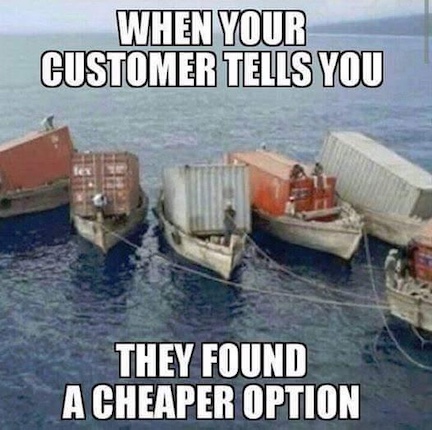A lesson learned ought to last a lifetime.
What has lasted a lifetime: riding a bike, tying shoes.
What should last a lifetime: That one perfect haircut, true love, your dog.
In most cases we adjust the timeline.
If your hopes and dreams are living someplace you like, doing something useful, and finding people who share the same values, how’s it going?
The part about living someplace you like is tricky.
You like where you live until the flood, the hurricane, the tornado, the earthquake, the erupting volcano.
Even Oregon has chased a few hopes and dreams away.
One year we had heavy rains, torrential, unending rain, followed by high winds.
The saturated ground released its grip on roots and trees fell on roads, roofs, and cars.
A flood not soon after challenged everyone with waterfront property to rethink the convenience of having a boat dock when their boat was docked to their chimney.
The winter ice storm that followed stranded some folks in their house for a week or two.
People came for the summer days and forgot about the rest of the year.
Imagine people in Florida, the new people who have never been in a hurricane, and they get two back to back.
It must be hard going back to where you came from after all the good-byes and farewells, the stay-in-touch neighbors, the family members who called you out for moving in the first place.
We know people who moved into a into a 120° blast-furnace.
“Have you met any new people yet?”
“We’ve barely left the house. It’s too damn hot out there.”
The Big Lesson Learned
Life does not begin and end with consumer goods, container ships, and trucking.
Somehow, you’d go on without all that, but there would be something missing.
The missing part would be updating your life based on current trends.
What better trend setting platform than HGTV?
Kitchen upgrades: “Open kitchens are on their way out as people crave segmented spaces after the adjustment to work from home.”
Bathroom Spa: “Enhanced bathrooms to mimic and pull in the amenities of a spa are going to be on the rise making a big splash.”
Biophilic Design: “This trend centers around bringing the outdoors inside, creating spaces that foster a stronger connection with nature.”
What’s it mean to people living normal lives?
I’ve had big city apartments where the front door opened right into the kitchen.
Open the door and take two steps to the sink and small countertop.
In those two steps you pass through the dining room with one small table and two chairs.
Slide two steps to the right and there’s the fridge; turn around to find the bathroom door.
It was a kitchen/dining room/bathroom done to scale for space and convenience.
Nothing has changed there and nothing will. It’s been thought-out for a century and that’s the design that works in the city.
The kitchen upgrade is for the folks who buy three apartments and combine them into one, or move into a suburban barn with ‘room to grow.’
If you move into a big house on a hill built in the 1990’s you may find a kitchen with an island cook-top, jennaire, pop-up fan, and built in electric oven.
On the wall opposite the electric oven you may find a gas oven – microwave oven stack, with a toaster oven in its own cabinet to the right.
That all adds up to five ways to cook a grilled cheese sandwich. It’s beyond up-gradable, but not when it comes to current trends.
Once you step onto the slippery up-grade slope you’re in for a ride.
Will the stuff to replace what’s already there in working condition come from a shipping container?
More likely than not.
Will you be surprised at how much everything costs?
Look For A Good Deal
Everybody knows a guy; every guy knows a guy.
You’d think you’d have every problem covered with all the guys, right?
The problem is that every guy thinks they know what every other guy knows.
Every contractor isn’t a combination carpenter, electrician, plumber, or mason all in one.
Not that they don’t think they are.
You want a guy that knows not to hook a 110 outlet to a 220 wire ‘to save time.’
You want a guy who understands that placing heating elements too close together will burn out.
You want a guy who turns off the main supply before disconnecting the faucet controls.
Are you guilty of any of these, or similar moves? I am. In a fit of ‘House Hero’ I’ve made a few mistakes.
That’s why we call in the professionals, who also make a few mistakes.
“To supply the new electric oven with power we’ll need to upgrade your electrical panel and run a new line from the garage on the other side of the house by either cutting into the floor here, or the ceiling underneath.”
Me: How about pulling 220 from the oven I took out of the island two feet away?
Once you get on a contractor’s schedule you start ordering the new stuff.
In a perfect world everything arrives on time for the electrician, the plumber, the mason, and the carpenter.
The demolition is done with the new structure framed in.
Sparky has access to what he needs before everything is sealed up.
Same for the plumber.
Once the water and electricity are installed, the mason comes in with the new stone countertops and waterfalls.
Happiness abounds.
Reality has a whole ‘nother schedule including back-orders, availability, replacements, I can get it cheaper from my guy, bad news my guy left town.
Second guessing is not a friend.






